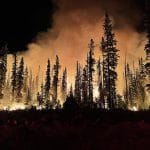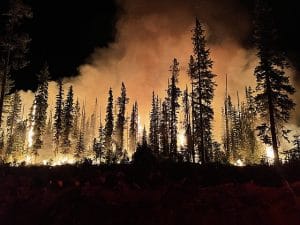A multifaceted approach to mitigating the negative impacts of global warming and human activities on ecosystems
The contemporary phenomena of global warming has created a “Hothouse Earth” and has wreaked havoc on pristine ecosystems. The melting of glaciers exposes vast swathes of marine water to atmospheric carbon dioxide, lowering pH from alkaline values and threatening the survival of corals and other marine organisms.
In addition, the indiscriminate felling of certain species of flora and the poaching of certain species of animals for medicinal purposes exacerbates their extinction. Clearing tropical rainforests for agriculture also strips the planet of its carbon sinks and lungs.
1. Protecting Coral Reefs
To address these issues, a combination of eclectic approaches is needed. One strategy is to implement equitable legislation in littoral areas to protect coral reefs, which are known as the “rainforests of the oceans” due to their rich biodiversity. Coral reefs are also threatened by bleaching from industrial chemicals, excessive exposure to ultraviolet radiation, increased ocean water temperatures, and the use of trawler boats.
In addition to legislative measures, techniques like biorock accretion can be employed to restore lost corals. This process involves using floating solar photovoltaic panels to power the growth of a living coral implanted into a coral skeleton.
2. Safeguarding Bee Populations
Another strategy is to promote the use of biopesticides, such as those derived from neem, in agricultural management in order to protect bee populations. The indiscriminate use of chemical pesticides can inhibit the reproduction of bees and negatively impact the reproduction of many species of flowering plants that depend on bees for pollination.
In addition to promoting biopesticides, local authorities can distribute bee boxes to encourage apiculture as a small-scale industry in forest areas, providing a sustainable source of income for forest dwellers while also promoting the conservation of local ecosystems.
3. Developing Ecotourism in Ecotones
Ecotones, or transition zones between two distinct ecosystems, can also be leveraged as opportunities for ecotourism and conservation. These areas tend to have high species diversity due to the edge effect and may host unique species that are of interest to tourists. For example, ecotones may contain swimming Kharai camels in Gujarat, India, dancing deer in Manipur, India, or Pondicherry sharks in the Godavari Estuarine region.
To capitalise on this potential, the development of ecotone-themed circuits for sustainable ecotourism could be pursued, with an environmental levy collected from tourists being used for local conservation efforts and skills training in green jobs.
3. Creating Wildlife Corridors
Finally, wildlife corridors can be established to facilitate the migration of species like elephants and bears between biodiversity-rich regions. For example, corridors could be built to connect the Eastern and Western Ghats in India. Migrating species would be exposed to a more diverse genetic pool, improving their chances of survival.
In addition, corridors can help to reduce the negative impacts of human development on wildlife, such as habitat loss and fragmentation.
Preserving the planet’s natural heritage
In conclusion, augmenting biodiversity requires a multifaceted approach that includes legislative measures, restoration techniques, promotion of alternative pest management strategies, ecotourism development, and the creation of wildlife corridors.
By implementing these strategies in an integrated and coordinated manner, it is possible to mitigate the negative impacts of global warming and human activities on ecosystems and their inhabitants.
In this backdrop, the above-mentioned novel solutions could pave the path for achieving “Mindful Utilisation instead of Mindless Exploitation” to achieve the adage “Environment is the next Economy” in letter and spirit.




















